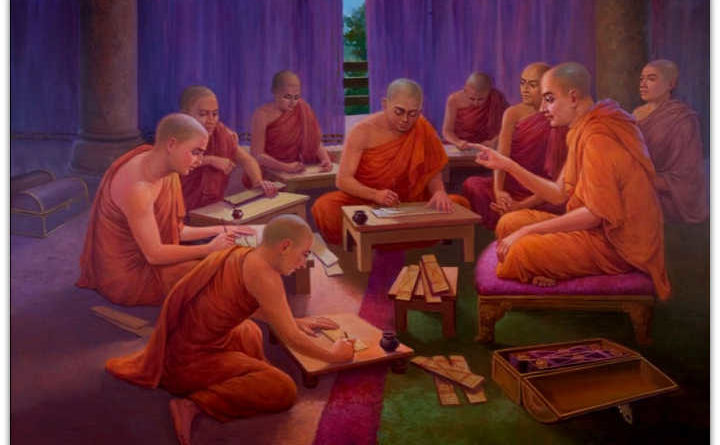The word Khuddaka means small or minor. Khuddaka Nikaya is the “Minor collection”. This is a heterogeneous mix of sermons, doctrines, stories, incidents, talks and poetry attributed to the Buddha and his disciples. Buddha had instructed Ananda(who compiled all teachings) that the Minor collection be given lower importance (probably because many texts are in form of stories & many are hyperbolic). In other words, for serious monks of good understanding, Abhidhamma, Sutta & Vinaya should be considered first. Khuddaka can be taken as light reading or material for the lay persons as many of it consists of stories for easy understanding of Dhamma(path). As a summary, Khuddakapatha contains many texts which Theravada Buddhist monks recite everyday regularly as it is(in pali). The well known Dhammapada contains real life stories that makes easy understanding of the path of Buddha & his teachings especially consequences of the actions(karma/kamma). Udana contains many important incidents in the life of Buddha from enlightenment to nirvana. Itivuttaka contains many teachings collected by a servile woman in the palace of Kosambi meant for the devout queens there who were not allowed to leave the palace. Suttanipata contains views of Buddha on important social & moral issues including on equality(racism & caste) , on non-violence to animals, on importance of celibacy etc. Vimanavatthu contains lives of heavenly beings(gods/angels) & their deeds of donation etc. that made it possible. Petavatthu contains miserable lives of ghosts who attained their condition due to miserliness etc. evil deeds & how they were released when donations were offered for them. Theragatha & Therigatha contain life stories and exclamations of top monks & nuns. Jatakacontains stories of previous births of Buddha & his disciples (here it can be found that Lord Buddha was the Lord Ram & Chief Monk Ven.Sariputta was Lord Krishna in past life). Apadana contains about 600 life stories including of all 25 Buddhas, of silent Buddhas & of top disciples with their exclamations. Buddhavamsa contains life stories of Gotama Buddha and also of previous 24 Buddhas. Cariyapitaka contains deeds, decisions & austerities by Buddha in previous rebirths(lives) which made him acquire highest moral character(parmis). Milindapanha contains the 100 BCE conversation of the Greek King Menander of Bactria(Afghanistan+Pakistan) with a monk Nagasena that led to his conversion and of his kingdom adapting Buddhism. Rest of the books contain teachings by many of Buddha’s disciples as shown below.
- Khuddakapatha (Short Passages)
- Saranagamana (1)
- Dasa Sikkhapada Sutta (2)
- Dvattimsakara Sutta (3)
- Samanera Pañha Sutta (4)
- Mangala Sutta (5)
- Ratana Sutta (6)
- Tirokudda Kanda Sutta (7)
- Nidhi Kanda Sutta (8)
- Karaniya Metta Sutta (9)
- Dhammapada (Dhamma Verses with Stories)
- Udana (Exclamations)
- Itivuttaka (Thus It Was Said [By Buddha])
- Suttanipata (Discourses On Important Social & Moral Issues)
- Vimanavatthu (Heaven & Its Mansions, Angels & Their Past Deeds)
- Petavatthu (Ghost Stories)
- Theragatha (264 Enlightened Elder Monks)
- Therigatha (Enlightened Elder Nuns)
- Jataka (547 Past Lives of Buddha)
- Niddesa (Instructions; By Ven. Sariputta)
- Patisambhidamagga (Path of Discrimination; By Ven. Sariputta)
- Apadana (Life Story of Buddha & of Other Enlightened ones)
- Buddhavamsa(The Lineage of Buddhas)
- Cariyapitaka(Buddha Acquiring Perfections in Past Lives)
- Nettipakarana(The Guide by Buddha’s Disciple Kaccana)
- Petakopadesa(Another Guide by Buddha’s Disciple Kaccana)
- Milindapanha (Conversion of Greek King Milinda [Menander])

